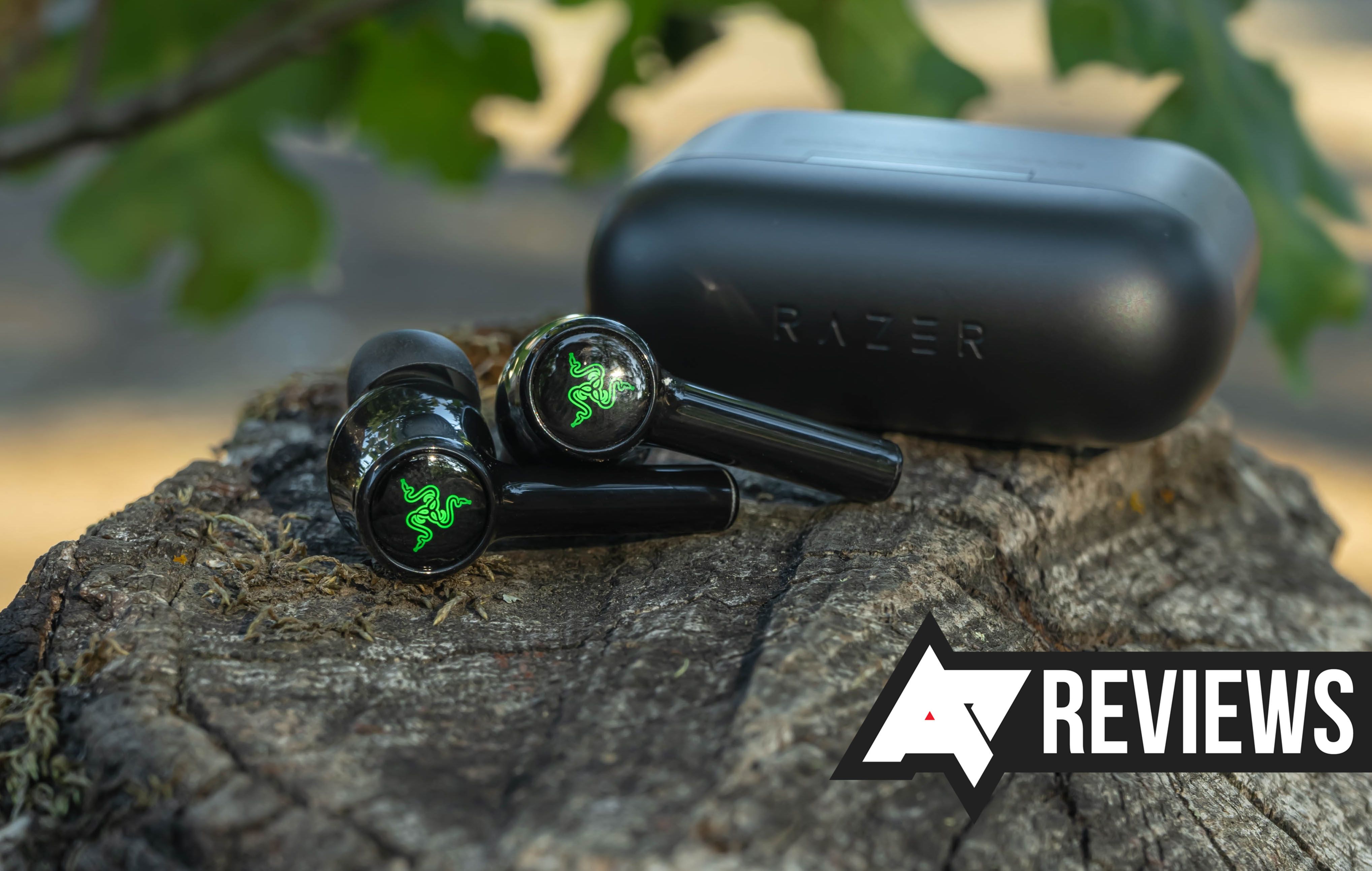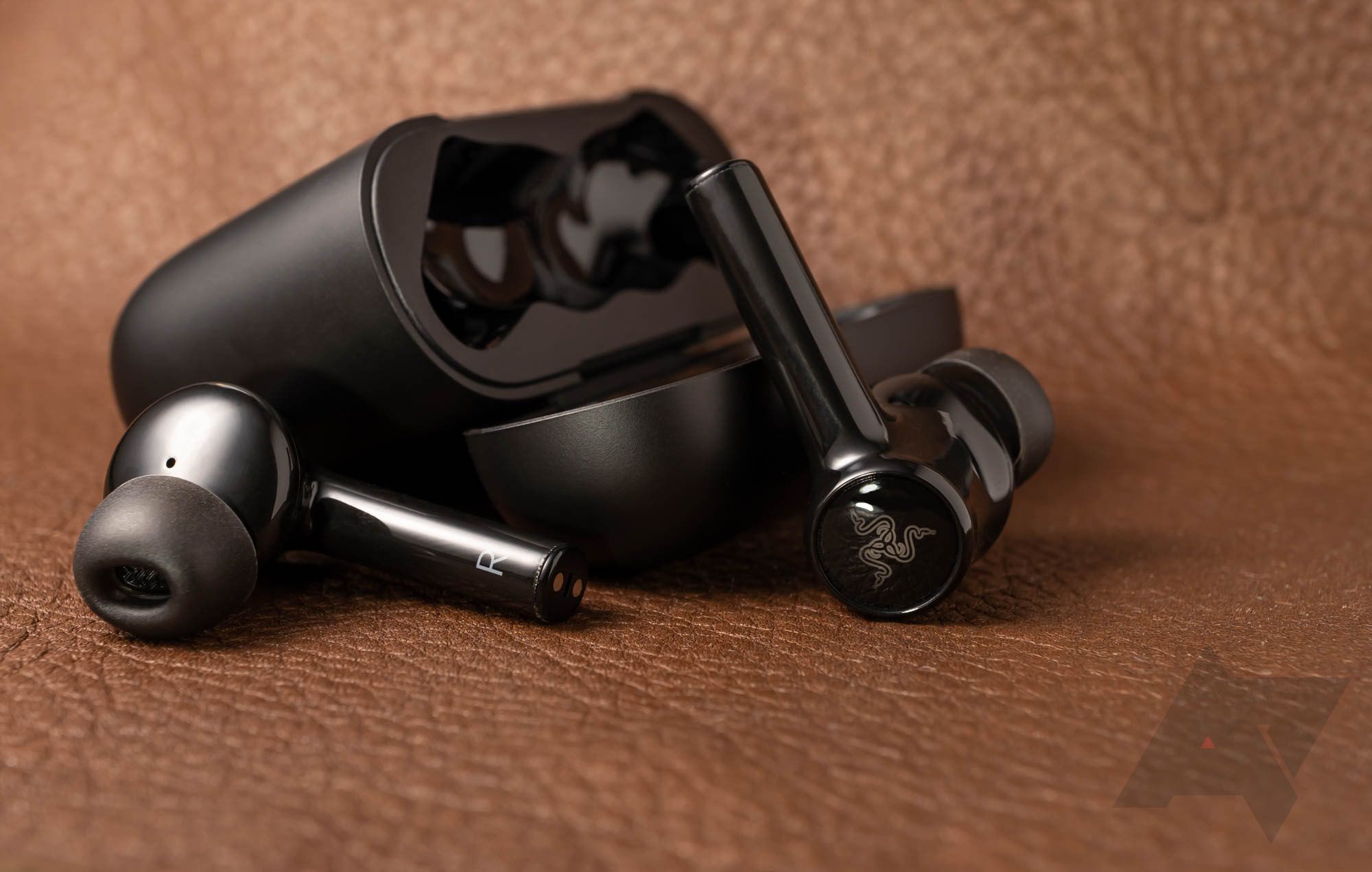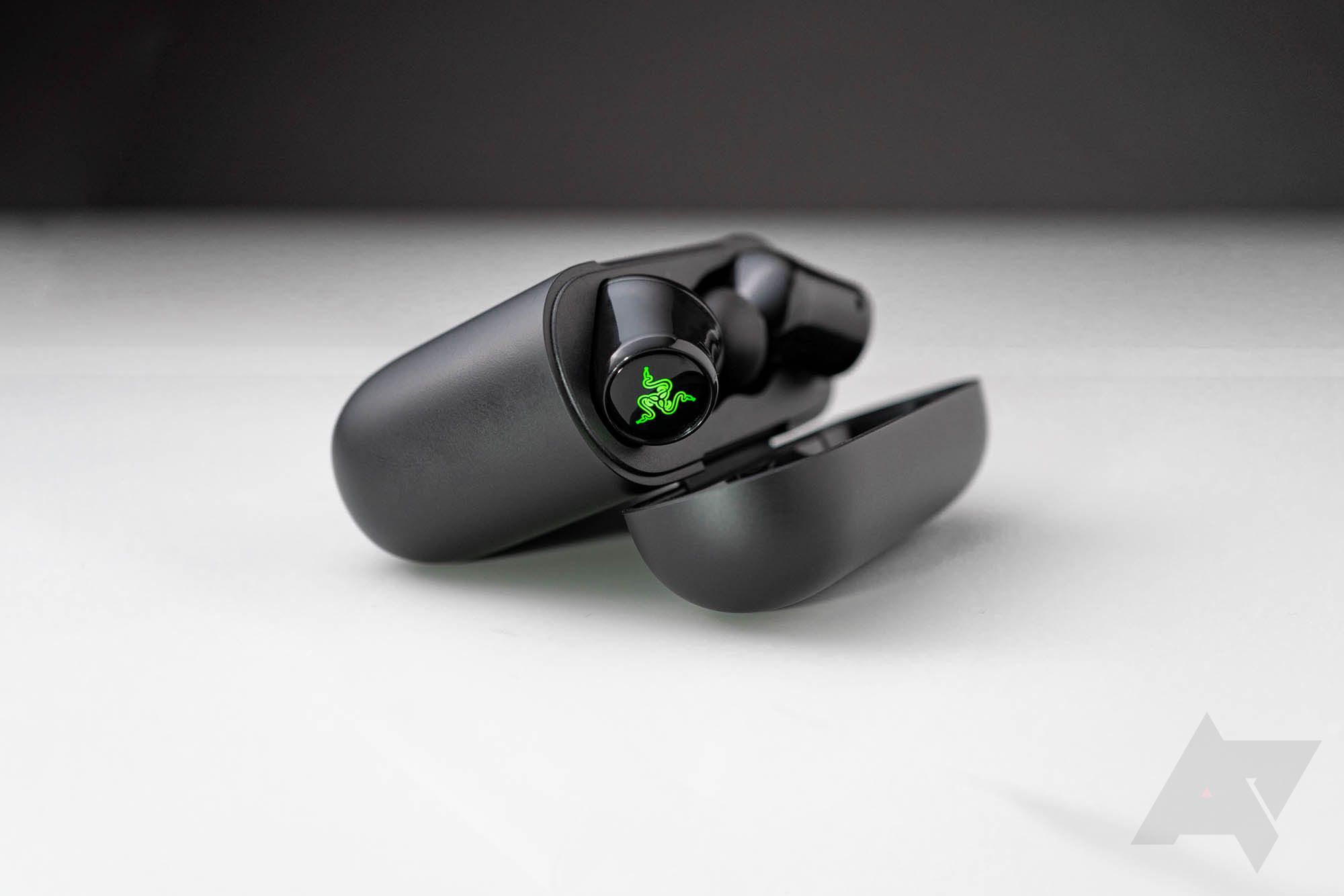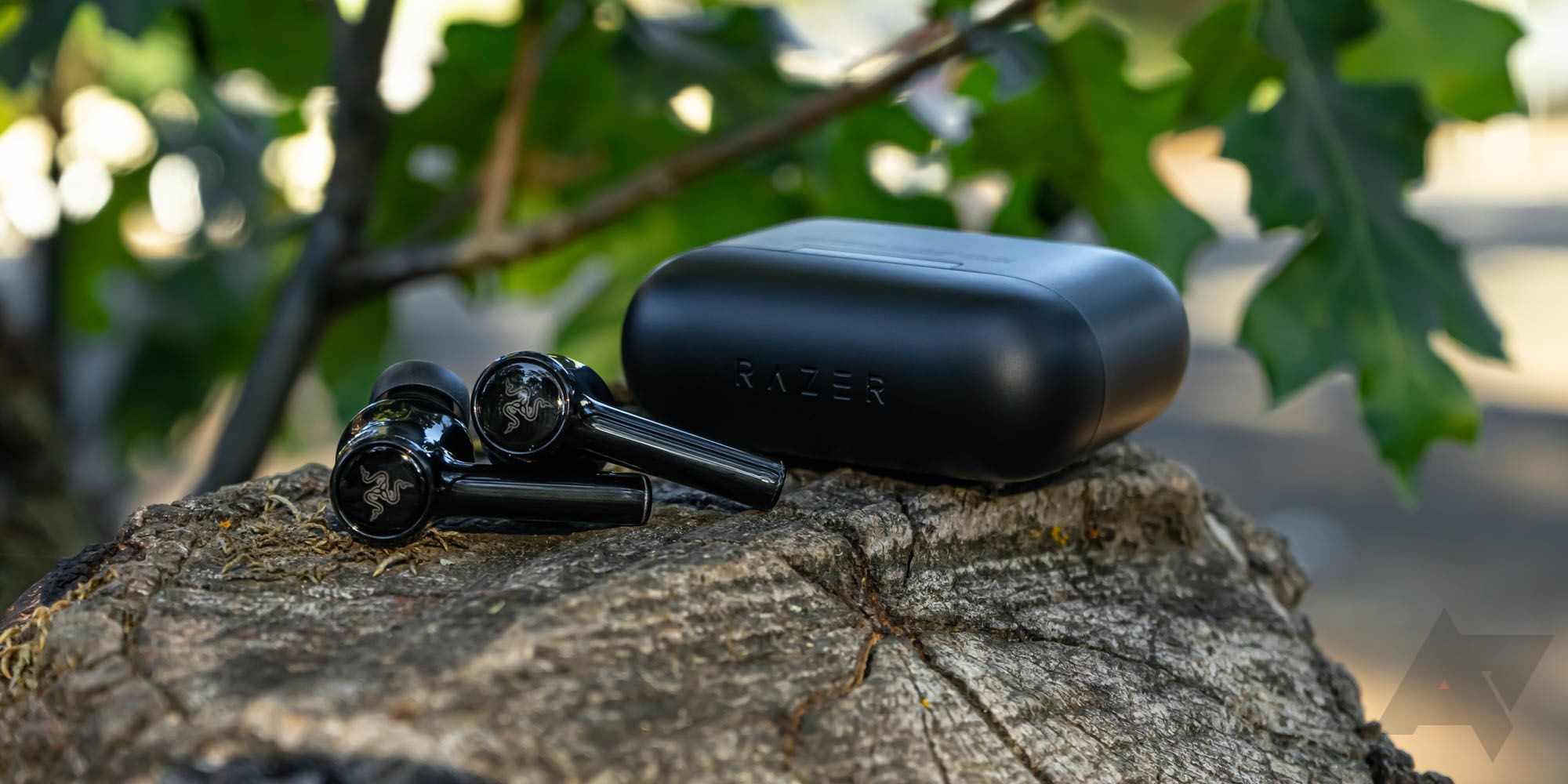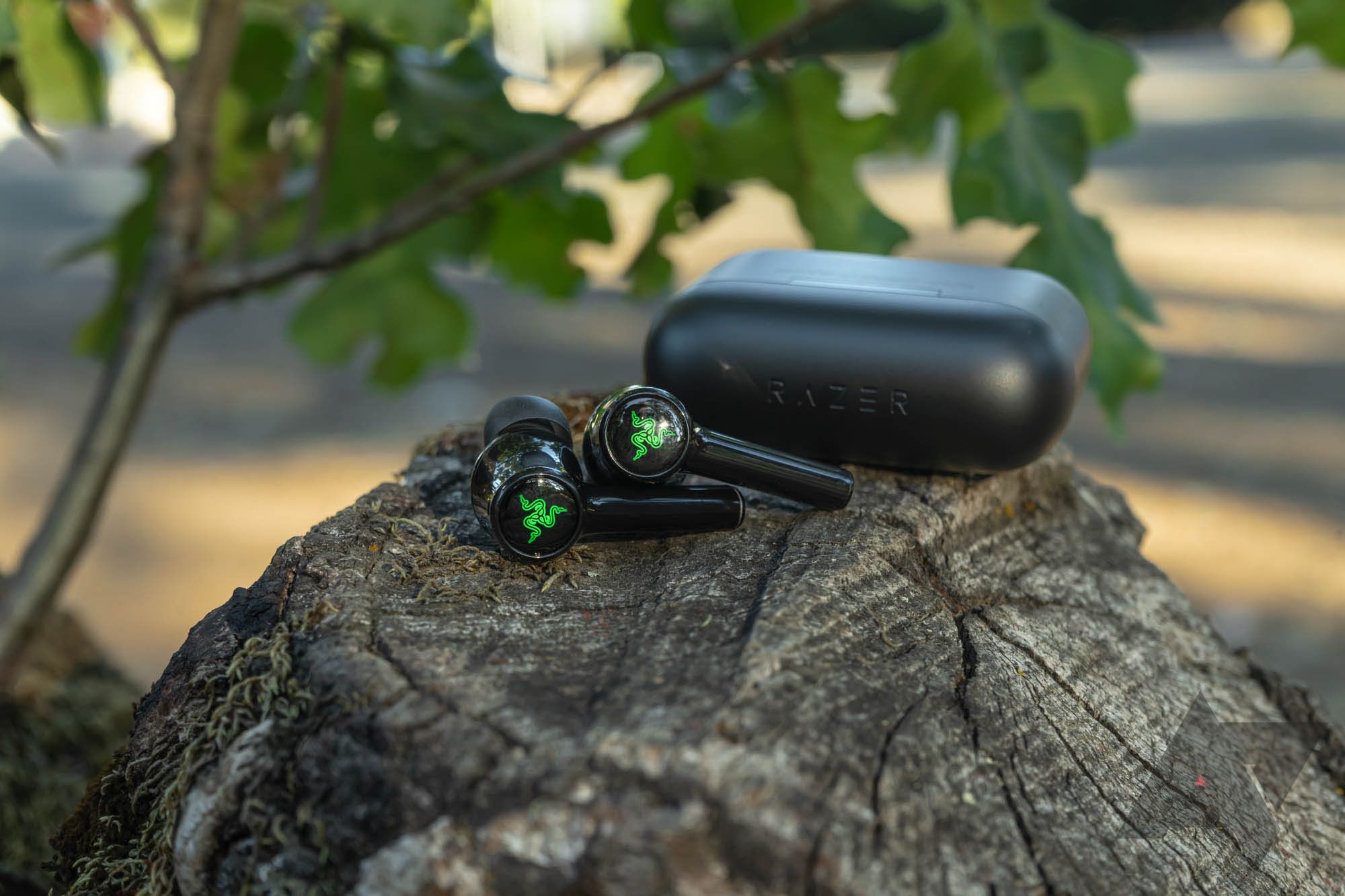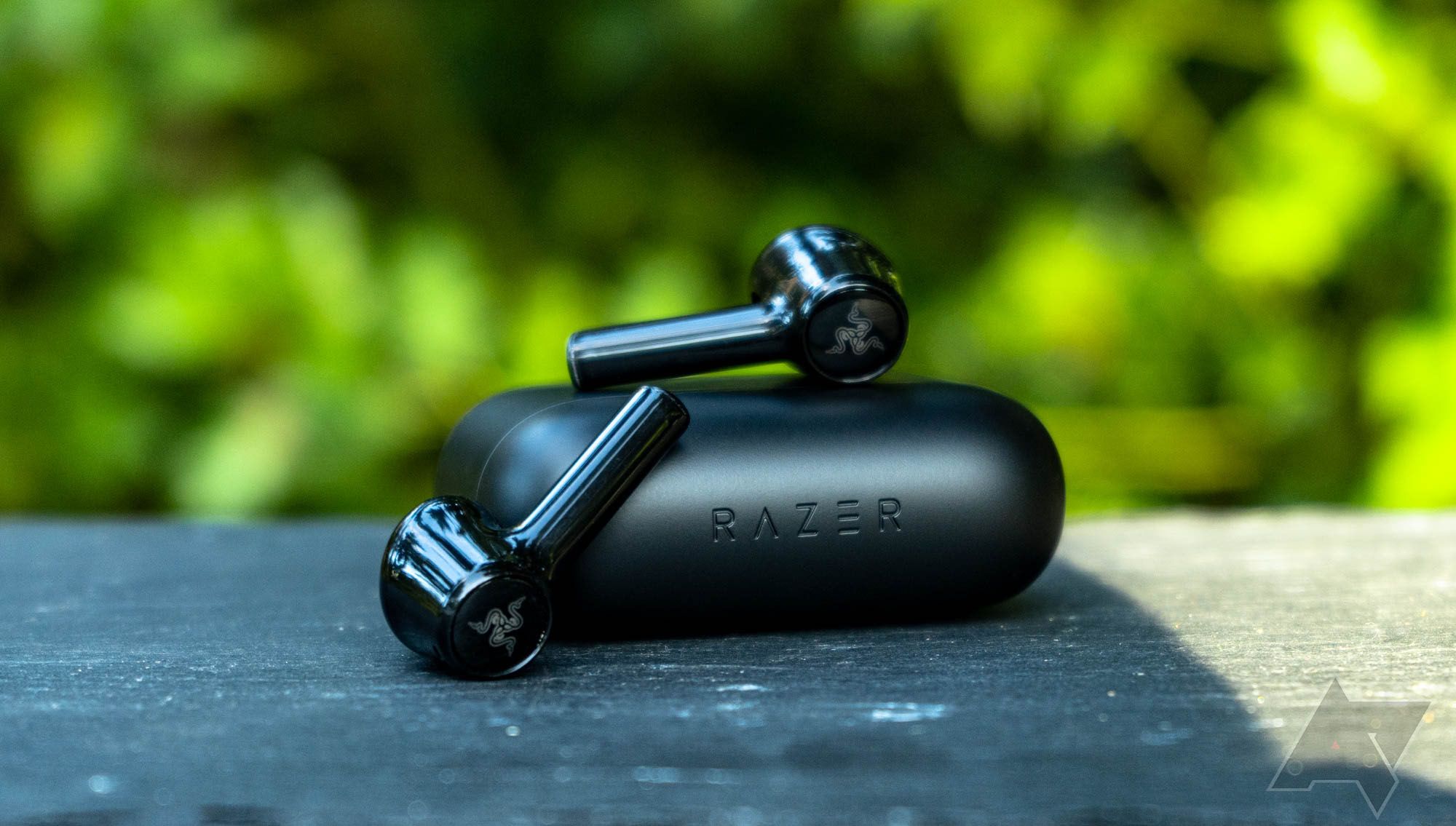Razer has taken a couple stabs at making competitive true wireless earbuds in the past, beginning with the original Hammerhead in 2019 and followed last year by the Hammerhead Pro. While both models were fine, they didn't quite live up to comparisons against earbuds like the Apple Airpods. Now a second generation of the Hammerhead is out, and while it has launched into a saturated market, Razer made some worthwhile improvements that make these fairly interesting at a mere $130.
Razer Hammerhead (2021)
The 2021 Razer Hammerhead earbuds solve most of the problems of past iterations, bringing together a comfortable fit and solid audio performance. They're equipped with LED lighting that can actually be useful in the right setting, but unfortunately the active noise canceling isn't worth much.
- Brand: Razer
- Battery Life: 6.5 hours or 4.5 hours w/ ANC enabled, case adds 4 additional charges
- Noise Cancellation: Yes
- Mono Listening: Yes, either earbud
- Connectivity: Bluetooth 5.2
- IP rating: IPX4
- Supported codecs: SBC, AAC
- Charging: USB Type-C (5V)
- Measurements: 43x30x18mm @ 9g (earbud), 64x53x25mm @ 53g (case)
- Light and comfortable fit
- LEDs are actually useful
- Low latency “gaming” mode
- Touch controls are slow and a little unreliable
- ANC is only marginally useful
- Requires two apps to control all features
Design, hardware, what's in the box
Razer’s latest Hammerhead earbuds don’t look much like the original version, instead taking most of its design cues from last year’s Pro model. In fact, the new Hammerheads are so similar that they can almost be mistaken for each other if not for the different finish. The Pro model had a non-reflective matte finish, while the new Hammerheads are glossy.
All of the other major aesthetic details and shape remain basically the same. The buds fit in-ear with long sticks stretching out from the bottom. The back of the body has a touch-responsive surface emblazoned with Razer’s logo, and it finally includes the multicolor LEDs that Razer products are famous for. Touch controls are fine, but most rely on a press-and-hold that can’t be too short or too long. It didn’t take too long to get the timing down, but I still can’t reliably get the play/pause action to work on the first try.
To my ears, the fit is incredibly comfortable and I can usually wear these for hours with almost no ear fatigue. Interchangeable silicone tips help to achieve a seal, and they’re tight enough that they block sound, but I wouldn’t consider them very secure. Even a gentle bump can dislodge them, and some light activity will eventually shake them out. From time to time, they even worked their way loose while I was sitting; but at least they continue to hang in my ear even if they’re not firmly seated.
The storage case also looks identical to that of the Pro, but unlike the buds, it also retained a matte finish. It doesn’t have a very premium feeling, and the lid occasionally produces a creaky plastic sound, but these are nitpicks. The buds sit partially raised inside, and sliding them into the case can be a little fiddly because the sticks have to be oriented perfectly, but it gets easier with a little practice. Charging is only supported via the Type-C port at the bottom, which may disappoint anybody who prefers wireless charging.
Besides the case and earbuds, the packaging is fairly minimal and also contains a 12-inch braided USB A-to-C cable, a small manual, and three pairs of interchangeable silicone tips in different sizes.
Sound quality, features, and battery life
Before going directly into audio quality, it’s important to start by saying the Hammerheads are tuned very poorly out of the box. I initially thought they sounded flat and imbalanced, but it was easily improved by dipping into the EQ settings and choosing one of the other standard profiles — and after fiddling for a few minutes, I came up with a custom profile that I’ve been really happy with. The settings remain with the buds between pairings, too.
Once the settings are right, audio quality is on par with similarly priced earbuds. Vocals come through nicely, and the tonal range feels well balanced. These buds aren’t up to the standards of serious audiophiles that demand an immersive sound stage and extremely sharp audio, nor will they appeal to fans of skull-rattling bass, but most listeners will be happy with the sound profile.
One of Razer’s highlight features is a low-latency mode that promises sub-60ms delay for gaming or watching video on players that don’t support audio syncing. It actually works quite well, with a delay that’s just barely detectable if you’re carefully watching for it. Just be aware that this has a natural side effect of occasionally glitchy audio that cuts out or briefly falls out of sync if there’s any interference to the wireless signal.
Some people will also be disappointed that there’s no sensor to detect if the buds have been taken out of an ear. I doubt everybody cares about this, and even I don’t mind very much that it’s missing, but this feels like a feature that should be standard on any pair of earbuds priced over $100.
Fast Pair is supported, which is great for avoiding the extra taps required to open Bluetooth settings. But it’s worth noting that the pairing mode can only be activated while at least one of the buds is in the case or the previously paired device is unavailable. Most people probably won’t be too bothered by this; but as a person who switches devices frequently, it can be a little inconvenient to remove the bud from my ear, drop it in the case for pairing, then remove it again to insert back into my ear.
As for active noise canceling... it exists, I suppose — but it’s not good. For starters, it’s only effective at cutting low frequency noise to about half volume, but it’s not anywhere close to cutting out the sound like some other buds. However, that’s overshadowed by some kind of bug that causes the ANC to diminish over time, usually becoming noticeable after about 30-45 minutes of usage. A little over an hour into using ANC and it’s almost indistinguishable from turning it off.
The Hammerheads perform well during calls, delivering clear and crisp sound. Several commands are available for controlling the call through different presses on the buds themselves, and it basically removes the need to reach for a phone to do anything other than change the volume.
What I didn’t anticipate is how much other people would like the audio quality from my end. Literally every person I’ve spoken with while using these buds has commented on how great my voice sounds over these, all entirely unprompted. I almost feel an obligation to use these with every call now.
Software and LEDs
The Razer Audio companion app isn’t technically necessary to use the buds, but it’s really worth installing at least for a few minutes to make a few configuration changes and setting a sound profile. The app also allows you to remap various actions to tap combinations, and you can even configure each bud individually. The only thing missing is a set of actions to raise or lower the volume.
Oddly, a separate “Razer Chroma RGB” companion app is required to make changes to the LED behavior. The multicolor lighting may seem gimmicky, and it certainly can be, but I have come around to the idea that it has some value. In addition to making the buds easier to spot if they’re dropped in a dark place, the LEDs can also be configured to flash when audio is playing, which acts as a signal to other people that you may not be able to hear them if they’re talking to you. Of course, if you don’t like the lighting effects, they can be disabled as well.
Should you buy it?
Probably. The second generation Hammerheads aren’t going to score the highest marks among audiophiles, fashionistas, or even people obsessed with having the most features or battery life; but they’re generally good enough on all accounts. Likewise, the $130 price tag could come down a little bit, but it’s reasonable when compared to several other similarly spec’d buds that run $150 or more.
There may be some deal breakers, like the lack of wireless charging and in-ear detection, not to mention the poor quality of the ANC, but those will be minor details for some people. Those trade-offs will bring other qualities like a comfortable design, support for Fast Pair, good low-latency mode, and even the LEDs.
Buy them if…
- You’re looking for comfortable true wireless earbuds
- You like using earbuds for phone calls
- You love RGB lighting
Don’t buy if…
- You need buds that stay in during workouts
- You want in-ear detection or good ANC

